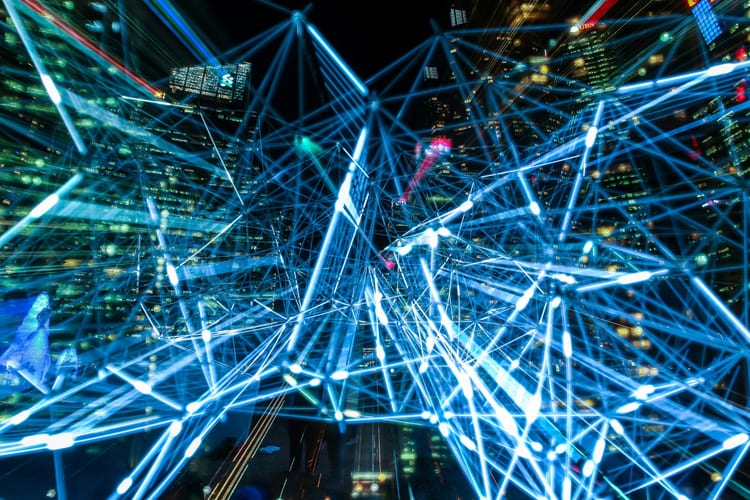IEEE Computer Society (IEEE-CS) tech experts unveil their annual predictions for the future of tech, presenting what they believe will be the most widely adopted technology trends in 2019. This year, the experts also review additional technologies that have not yet reached broad adoption and will be revisited next year–such as digital twins–as well as technologies that have outpaced many others, including Kubernetes and Docker. The forecast by the world’s premier organization of computer professionals consistently ranks as one of its most anticipated announcements.
“The Computer Society’s predictions, based on an in-depth analysis by a team of leading technology experts, identify top technologies that have substantial potential to disrupt the market in the year 2019,” said Hironori Kasahara, IEEE Computer Society President. “The technical community depends on the Computer Society as the source of technology IP, trends, and information. IEEE-CS predictions represent our commitment to keeping our community prepared for the technological landscape of the future.”
Dejan Milojicic, Hewlett Packard Enterprise Distinguished Technologist and IEEE Computer Society past president (2014), said, “In 2019 we expect to see ever-increasing adoption of deep learning accelerators in the areas of transportation, advanced security, and technologies for humanity. Fueled by advanced materials, adoption of virtual reality and the Internet of Bodies will stretch the future to new unknowns. We are excited about our predictions and the bets we have made for 2019’s technology trends.”
The top 10 technology trends predicted to reach adoption in 2019 are:
- Deep learning accelerators such as GPUs, FPGAs, and more recently TPUs. More companies have been announcing plans to design their own accelerators, which are widely used in data centers. There is also an opportunity to deploy them at the edge, initially for inference and for limited training over time. This also includes accelerators for very low power devices. The development of these technologies will allow machine learning (or smart devices) to be used in many IoT devices and appliances.
- Assisted transportation. While the vision of fully autonomous, self-driving vehicles might still be a few years away, increasingly automated assistance is taking place in both personal and municipal (dedicated) vehicles. Assisted transportation is already very useful in terms of wide recognition and is paving the way for fully autonomous vehicles. This technology is highly dependent on deep learning accelerators (see #1) for video recognition.
- The Internet of Bodies (IoB). IoT and self-monitoring technologies are moving closer to and even inside the human body. Consumers are comfortable with self-tracking using external devices (such as fitness trackers and smart glasses) and with playing games using augmented reality devices. Digital pills are entering mainstream medicine, and body-attached, implantable, and embedded IoB devices are also beginning to interact with sensors in the environment. These devices yield richer data that enable more interesting and useful applications, but also raise concerns about security, privacy, physical harm, and abuse.
- Social credit algorithms. These algorithms use facial recognition and other advanced biometrics to identify a person and retrieve data about that person from social media and other digital profiles for the purpose of approval or denial of access to consumer products or social services. In our increasingly networked world, the combination of biometrics and blended social data streams can turn a brief observation into a judgment of whether a person is a good or bad risk or worthy of public social sanction. Some countries are reportedly already using social credit algorithms to assess loyalty to the state.
- Advanced (smart) materials and devices. We believe novel and advanced materials and devices for sensors, actuators, and wireless communications, such as tunable glass, smart paper, and ingestible transmitters, will create an explosion of exciting applications in healthcare, packaging, appliances, and more. These technologies will also advance pervasive, ubiquitous, and immersive computing, such as the recent announcement of a cellular phone with a foldable screen. The use of such technologies will have a large impact in the way we perceive IoT devices and will lead to new usage models.
- Active security protection. The traditional method of protecting computer systems involves the deployment of prevention mechanisms, such as anti-virus software. As attackers become more sophisticated, the effectiveness of protection mechanisms decreases as the cost increases. However, a new generation of security mechanisms is emerging that uses an active approach, such as hooks that can be activated when new types of attacks are exposed and machine-learning mechanisms to identify sophisticated attacks. Attacking the attacker is a technological possibility as well, but is almost always illegal.
- Virtual reality (VR) and augmented reality (AR). These related technologies have been hitting the mainstream in some respects for a number of years. For a well-known example, Pokemon Go is a game that uses the camera of a smartphone to interpose fictional objects in real-world surroundings. Gaming is clearly a driver of these technologies, with other consumer devices becoming affordable and commonplace. VR and AR technologies are also useful for education, engineering, and other fields. However, there has been a Catch-22 in that there is a lack of applications resulting from the high cost of entry, yet the cost has stayed high due to a lack of applications. With advertisements for VR headsets appearing during prime-time television programs, we may have finally reached a tipping point.
- Chatbots. These artificial intelligence (AI) programs simulate interactive human conversation using key pre-calculated user phrases and auditory or text-based signals. Chatbots have recently started to use self-created sentences in lieu of pre-calculated user phrases, providing better results. Chatbots are frequently used for basic customer service on social networking hubs and are often included in operating systems as intelligent virtual assistants. We have recently witnessed the use of chatbots as personal assistants capable of machine-to-machine communications as well. In fact, chatbots mimic humans so well that some countries are considering requiring chatbots to disclose that they are not human. Industry is looking to expand chatbot applications to interaction with cognitive-impaired children as a way to provide therapeutic support.
- Automated voice spam (robocall) prevention. Spam phone calls are an ongoing problem of increasing sophistication, such as spoofing the caller ID number of the victim’s family and business associates. This is leading people to regularly ignore phone calls, creating risks such as true emergency calls going unanswered. However, emerging technology can now block spoofed caller ID and intercept questionable calls so the computer can ask questions of the caller to assess whether he or she is legitimate.
- Technology for humanity (specifically machine learning). We are approaching the point where technology can help resolve societal issues. We predict that large-scale use of machine learning, robots, and drones will help improve agriculture, ease drought, ensure supply of food, and improve health in remote areas. Some of these activities have already started, but we predict an increase in adoption rate and the reporting of success stories in the next year. “Sensors everywhere” and advances in IoT and edge computing are major factors contributing to the adoption of this technology. Recent events, such as major fires and bridge collapses, are further accelerating the urgency to adopt monitoring technologies in fields like forests and smart roads.




